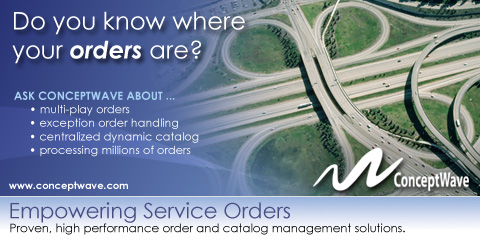
article page
| 1
| 2
| 3
|
The industry needs to come to some consensus on which type of barcodes and which set of reader capabilities will prevail. This is necessary because without greater commonality it will be difficult to achieve a critical mass. If different devices read completely different barcodes, as is often the case in today's nascent stage, it makes it tougher for advertisers and retailers to pick a direction in which to invest. That doesn't mean only one type of barcode will dominate. Barcodes range in size, complexity, and the amount of information they can contain. It stands to reason different formats will be most suitable to different purposes. But if a common subset can be defined, and reader applications refined to support them, critical mass can be achieved.
The reason retailers are especially excited about mobile barcodes is that they can combine the traditional shopping experience with that of the Internet. For example, Papa John's pizza has introduced a mobile ordering website. In September it announced a partnership with NeoMedia in which it will send mailers in select markets that include barcodes. Customers can use their NeoReader equipped devices to read the barcode, which will direct them to the mobile pizza site and give them an offer for free pizza. Similarly,
|
|
The industry needs to come to some consensus on which type of barcodes and which set of reader capabilities will prevail.
|
|


This kind of approach not only marries traditional shopping with the Internet model, but has the potential to increase sales and customer loyalty, as well. For example, imagine you're out shopping for a pair of shoes that's on sale. You get to the store and it turns out they don't have your size. You scan the barcode on a display and your mobile phone displays a menu asking if you need a specific size or a different color. When you respond, the device gives you two options. You can pay the sale price now and come back to the store in a week when the next shipment is in, or have the item drop shipped to your home immediately.
OSS/BSS applications can play a role in these kinds of scenarios because they are fulfillment chains. Consider that something in the network needs to know what information to present to the user when a certain barcode is scanned. The barcode acts essentially as a provisioning trigger. OSS mechanisms in the background need to ensure that the correct
|
|
|
|

Ralph Lauren Rugby has begun to introduce interactive displays in their flagship stores. Shoppers that load an application called QR reader on their mobile devices can scan QR codes – an advanced 2D barcode with significant information capacity – that will direct them to Rugby's mobile website where they can make purchases directly. These are relatively inelegant applications of the technology. The Papa John's example relies on a paper-based mailing and assumes users have NeoReader loaded on their devices. The Ralph Lauren example assumes people want to shop online while they're out walking around. Regardless, these examples are evidence that major chains are beginning to experiment with the technology.
Mobile devices as barcode readers become most compelling when they enhance the retail shopping experience. In early September, Big in Japan won one of Google's 10 Android Developer Challenge awards for its GoCart application. GoCart is being designed for Google's Android platform and for the iPhone. It allows a shopper to scan the barcode on a product and instantly pull up product reviews and comparative pricing from other outlets. This is where the local shopping mall and the Internet become bedfellows.
|
|

information is delivered to the device immediately. When the user takes action, such as requesting a certain size and color shoe that he or she will pick up in a week, the fulfillment application needs to ensure that information is transmitted into the supply chain. The retailer's supply chain process would then add the customer's requested item to the next shipment and mark it as "hold for [customer name]."
As the telecom industry struggles to devise valuable applications that enhance or supersede what the Internet can offer, it's important for OSS/BSS providers to communicate the roles they can actually play. Too many are making vague claims about their ability to drive new, application-based revenue streams without adding any creative ideas to what those applications might look like. Those ill-defined statements sound like "me-too" pandering, and they don't give buyers – in this case mobile operators – confidence that the OSS/BSS space can play a critical role. Over-promising and under-delivering is a persistent problem that makes the OSS/BSS space a disorderly market with a questionable value proposition. Like our favorite presidential candidates, it's time for us to stop talking in generalities and offer real details about what OSS/BSS can deliver.
article page
| 1
| 2
| 3
|
|
|





